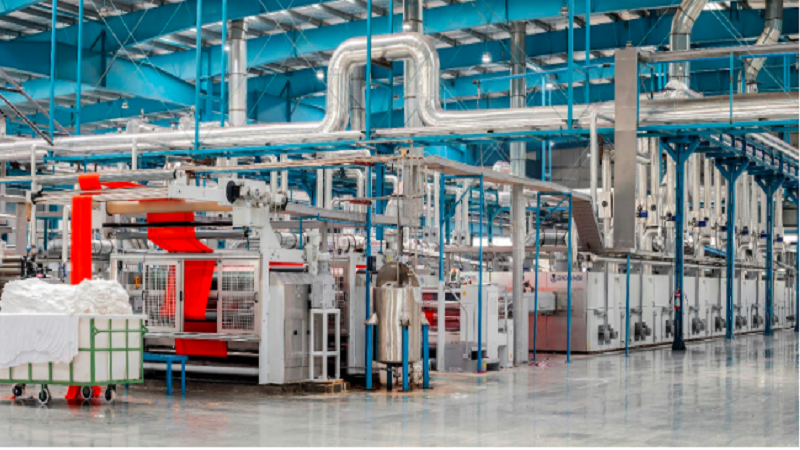In the industrial sector, efficiency isn’t just a buzzword—it’s the linchpin of profitability. Businesses constantly search for methods to curtail expenses without sacrificing quality or performance. Achieving this delicate balance often hinges on operational efficiency, particularly in the domain of resource management. Keep reading to discover how savvy financial choices, streamlined processes, and improved resource management can transform your operational expenses into a blueprint for success.
Reducing Operational Costs
The adage “a penny saved is a penny earned” holds profound truth in industrial operations. Responsible for a notable share of overhead, the equipment used in these facilities often dictates the overall efficiency and cost-effectiveness of the plant. Managers, thus, are constantly seeking viable strategies to reduce these expenses without compromising performance or quality.
Purchasing used evaporators, for example, presents an astute decision in realizing these cost-saving goals. By this measure, companies can effectively pare down their initial capital investment, availing themselves of necessary equipment at a fraction of the cost of acquiring new machinery. The result directly impacts the bottom line, further stretching the operational budget while maintaining production standards.
Spotting opportunities for financial prudence doesn’t stop at procurement. Regular maintenance schedules extend the lifespan of equipment, including refurbished pieces, which maximizes the return on investment. This foresight in maintenance ensures less downtime and diminishes the likelihood of costly emergency repairs or replacements.
Moreover, training staff in energy-conservation techniques can substantially save utility costs. When employees are aware of and actively participate in energy-saving practices, the cumulative effect can translate to significant financial reprieve for the enterprise. This proactive stance empowers the workforce and collectively reinforces the company’s commitment to cost-efficient operations.
Optimizing Production Processes
Industrial facilities are equipped with a wide range of complex systems and equipment that are crucial for their day-to-day operations. From the intricate HVAC systems that regulate the facility’s climate to the specialized production line machinery that drives manufacturing processes, these assets play a vital role in maintaining operational efficiency. However, these systems are also susceptible to wear and tear over time, making routine maintenance a critical aspect of facility management.
For example, working with a company like Pol’s Heating and Cooling for preventive HVAC maintenance will help to nip potential HVAC issues in the bud. This approach will enhance production processes by boosting furnace and air conditioner uptime and minimizing operational hitches.
By implementing a proactive preventative maintenance program, industrial facilities can ensure that their systems and equipment are regularly inspected, serviced, and repaired as needed. This approach not only helps to prevent unexpected breakdowns and downtime but also contributes to maximizing operational efficiency. Regular maintenance can identify and address minor issues before they escalate into major problems, ultimately saving the facility money in the long run by limiting costly repairs and potential disruptions to production.
Improving Resource Management
Improving resource management has emerged as a linchpin for boosting efficiency and slashing operational costs in industrial settings. A meticulous approach to overseeing resources ensures that materials and energy are utilized optimally, preventing waste and reducing unnecessary expenses. It instills a culture of responsibility, where every resource is considered valuable, and its use is carefully calculated.
Establishing a comprehensive inventory tracking system is a transformative move that helps prevent overstocking and product obsolescence. It offers a clear view of stock levels, enabling timely order placements and minimizing the risk of production halts due to material shortages. This breeds an environment of continuous production flow and cost-effective raw material utilization.
Investment in efficient technology solutions is a decisive step towards better resource management. Automated systems for monitoring and controlling resource use can curtail excessive consumption and pinpoint areas for improvement. This technology-driven oversight contributes to steadier financial performance and promotes sustainable industrial practices.
Regular training sessions for staff on resource management best practices are invaluable. Employees become key players in the quest for reduced wastage and heightened efficiency. Empowered with knowledge and skills, they are better equipped to identify and act on conservation opportunities, driving the organization toward its cost-saving objectives.
Overall, maximizing industrial operations’ efficiency requires a multifaceted approach that integrates strategic financial decisions, streamlined processes, and vigilant resource management. By embracing cost-effective measures such as purchasing quality used equipment and implementing proactive maintenance strategies, businesses can reduce operational costs and enhance productivity and sustainability in the long run. click here
